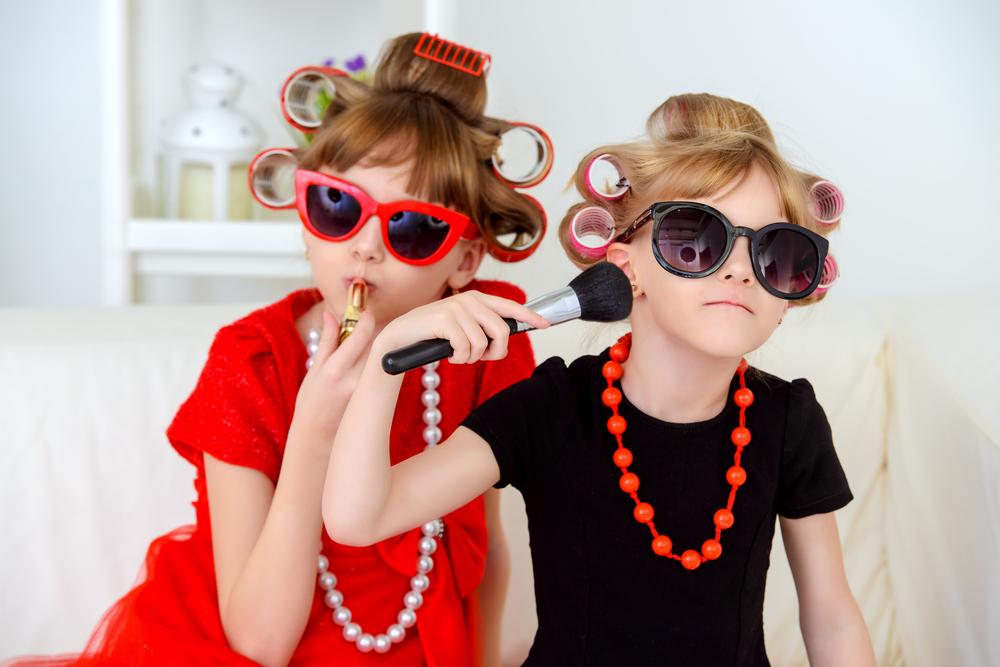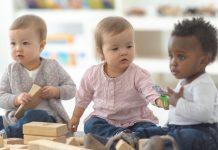 Lately, this meme has been showing up in my feed: People are always complaining teens are “too old” for trick-or-treating. Let me tell you. If your kid shows up at my door trying to hang on to one last shred of their childhood, I’ll be damned if I’m going to begrudge them a Snickers bar. Childhood is short enough as it is.
Lately, this meme has been showing up in my feed: People are always complaining teens are “too old” for trick-or-treating. Let me tell you. If your kid shows up at my door trying to hang on to one last shred of their childhood, I’ll be damned if I’m going to begrudge them a Snickers bar. Childhood is short enough as it is.
I completely agree with the sentiment, but I wonder — are there really people out there refusing candy to trick-or-treaters of a certain age who come by on Halloween? Or are the ways we are telling kids they are too old to participate more subtle than being stingy with our Snickers bars? Is it “society” that’s to blame for ever-shortening childhoods, or is it us as parents?
As a Certified Play Expert, I spend a lot of time pondering these questions and paying attention to the ways that we as grown-ups get in the way of play — our own and that of our kids.
Playing dress-up, on Halloween or any other day of the year, comes with loads of developmental benefits for a wide range of age groups. Physically, the act of putting on and taking off items of clothing develops fine motor skills and sensory awareness. Dress-up play is more than just putting on clothing, though.
READ: It’s Okay to Just Let Them Play
Creative thinking and problem-solving skills are developed as the child selects the costume pieces and creates a character. When kids put on a costume, they don’t just wear the clothes — they naturally role-play. By immersing themselves into another character, they explore new communication skills. Kids learn how to see the world from a different perspective, which develops empathy, and they can gain confidence by practicing social interactions. Are we not playing dress-up when we put on a suit to make an important presentation or wear a gown to a ball? These wardrobe choices help us to access the characters — or parts of our personalities — we need to conquer the particular task. Likewise, when kids play dress-up they are able to “try on” different personalities. There’s no science that defines an age — ANY AGE — in which it’s developmentally appropriate to outgrow dress-up play.
 However, if I were to go into any store that stocks dress-up costumes outside of the Halloween season, I’m unlikely to find anything larger than a size 6. My 7-year-old daughter has always loved dress-up play. She has a huge wardrobe full of costumes, and when she has friends over, dress-up is always the first thing they want to do. Even as a toy store owner, as they get bigger it’s getting harder to find princess dresses or career play costumes that she and her friends can wear. Last year at our big toy conference amidst hundreds of toy manufacturers, I found only one brand carrying costumes bigger than a child’s size 6. It’s ironic because that same toy conference was held in a convention center that was also hosting a Comic-Con. (If you don’t know, a Comic-Con is basically thousands of big kids and grown-ups playing very elaborate dress-up.)
However, if I were to go into any store that stocks dress-up costumes outside of the Halloween season, I’m unlikely to find anything larger than a size 6. My 7-year-old daughter has always loved dress-up play. She has a huge wardrobe full of costumes, and when she has friends over, dress-up is always the first thing they want to do. Even as a toy store owner, as they get bigger it’s getting harder to find princess dresses or career play costumes that she and her friends can wear. Last year at our big toy conference amidst hundreds of toy manufacturers, I found only one brand carrying costumes bigger than a child’s size 6. It’s ironic because that same toy conference was held in a convention center that was also hosting a Comic-Con. (If you don’t know, a Comic-Con is basically thousands of big kids and grown-ups playing very elaborate dress-up.)
READ: How Old Is Too Old for Toys?
I see a lot of parents tell their kids, “You’re too old for this,” when they love a toy or steer kids toward toys they may not be developmentally ready for or — the worst — tell their middle schooler, “Oh, you’re too big for toys.” I know parents mean well; they want to ensure that their toys are appropriate and older children are fitting in socially. I want a child’s toy to be developmentally appropriate as much as — no, probably a lot more — than most people. But I also think it’s just as important that we don’t have to “hang on to one last shred of childhood” EVER — that we can carry that playfulness through life.
Maybe encouraging our teenagers to play dress-up isn’t going to save the world, but if they put on a cape and mask and zoom around the room, they might. And if we watch the messages that we’re giving them about whether or not it’s okay for them to play, maybe childhood doesn’t have to be so short.
















